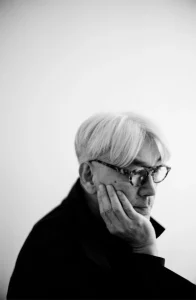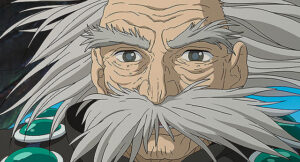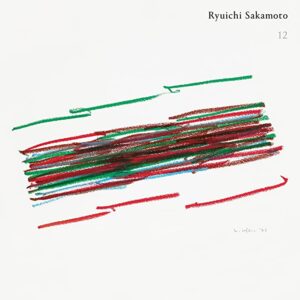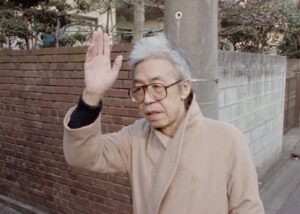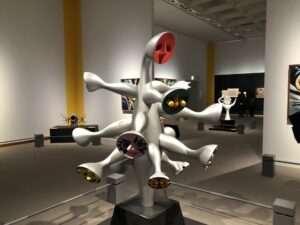It has been about a month since I finished reading this book.
I wanted to write my impressions immediately, but my writing did not progress very well. The more seriously I tried to write, the more my hand stopped and I thought about it.
In the meantime, articles of impressions and criticisms were popping up one after another on Note.
As I read them, I sometimes thought, “I see what you mean,” and at other times I thought they were off the mark. Of course, there is no correct answer to how to read a book.
I don’t mind if a critique is completely off the mark, but when I read one that is simply wrong and ends with a condescending tone, it makes me feel a little uneasy.
So, I am afraid to give my opinion, and I don’t mean to be eccentric, but I thought this work was Haruki Murakami’s best and worst masterpiece (I don’t mean that as a disparagement).
As you have written, this work inherits the worldview of “The End of the World” and “Hard-Boiled Wonderland,” and exquisitely incorporates the essence of Haruki Murakami’s previous novels such as “Norwegian Wood” and “The Knight Commander’s Killer. It could be called the culmination of Haruki Murakami’s work.
Apart from that, I say it is a masterpiece because it brilliantly depicts the rebirth and consummation of a lost love, which could not be fulfilled in Norwegian Woods.
In Norwegian Woods, Naoko commits suicide, and the protagonist, who could not save her, ends up being attracted to Green, who has a realistic charm, and chooses her. It was a very sad but realistic ending.
However, in this novel, I think it is a postquel to the fact that in the end, “Green” could not and would not satisfy him.
The protagonist had to give up even his ego to try to regain his lost love. With the help of Idea, who also appeared in The Knight Commander.
I feel that the story of this postquel is something unique and original that could only be written by an individual, rather than a novelist, Haruki Murakami.
This work, at first glance, seems like a fantasy, but in fact, I am ashamed to say again, it depicts the ultimate pure love (I was horrified as I wrote it).
In that sense, it is a masterpiece. In other words, it is the story of “the rebirth and perfection of lost love” that Haruki Murakami wished for in his lifetime.
It is a work that deserves the Nobel Prize in Literature, no exaggeration or otherwise.
In fact, we too have our own ways of complementing love that is lost in reality and never revived. From the goofy one of reuniting in heaven to the one of being reborn and reunited. Somehow, we create a single story in an attempt to revive the lost love.
One such example would be the protagonist of this novel, who pursues his lost partner’s consciousness to the point of disintegrating himself (consciousness) and finally uniting them.
The protagonist finally completes the ultimate love in an idea in which reality and the world of dreams are blended. It might be paraphrased as a metaphysical “heart-to-heart”.
However, the more personal the way it is done, the harder it is for people to empathize with it. As evidence of this, I have a feeling that many people would not want to live in that walled city.
However, the protagonist in the novel could only complete his own lost love in that world. In fact, he did.
This work can be said to be the merkmal of the writer Haruki Murakami, a story about his own salvation, just as there is a theme that one writer should definitely write about when the right time comes.
At the same time, what I mean by “it sucked” is that even though it was a masterpiece, it did not evoke any emotional tremors in me like when I read Norwegian Woods. As I read it, I thought it was amazing and deep, but at the same time, I kept myself awake the whole time.
The only thing I like about long novels is that they either make me shake with emotion or not (that’s just my style).
(That’s just my style.) In music, I like the symphonies of the Romantic era.
In music, they are like the symphonies of the Romantic era; in fiction, they are like Stendhal or Dickens.
There is no need for the style itself to be aesthetically pleasing, sparkling, or innovative. It does not matter if there are contradictions in the story, if foreshadowing is left unexplained, or if the story is logically bankrupt.
In a word, art is an explosion.
Whether it is music, painting, or literature. This is the basic stance I seek in art.
I want the explosion, or at any rate, the powerful blast that words can bring, to blow my mind somewhere far away. I want my mind to be blown away to the farthest reaches of the universe.
In that sense, I have to say “the worst”. It is a masterpiece of the highest order. I dare to say so because I have always loved and read Haruki Murakami’s works.
And one more thing, and this is just sentimentality, but the main character goes back to a woman in the real world, a woman who is green, like the main character in Norwegian Woods (or so it seems).
This is how the third part ends, but I was very curious about the last two lines myself. I am not sure if the protagonist was really able to return to her or not.
I remember that the boy in the Yellow Submarine says that if he put out the candle in front of him, he would have immediately moved on to the real world, but these two lines are just described as dark.
Unintentionally, he may have been paying homage to the scene in the Norwegian forest ending, where the protagonist is in a telephone bock, calling Green, and loses track of where he is, and loses sight of the scenery himself.
But the meaning is decidedly different. The Norwegian forest is green in the real world. So I think it was Endehring.
It has been about 30 years since Norwegian Woods was written, and the cruel truth is that green, no matter how attractive it is in the real world, “was not good enough for the protagonist, in the end, and only Naoko was good enough for him.
It is a tragedy for those who have come to realize this. Even if it is in an Idea, once the heart is achieved, the remaining me in reality can only disappear into the darkness.
I feel that this is also the hell that Haruki Murakami, the writer, has embraced and has been depicting all along (sorry if I am wrong). Just as Soseki Natsume has always depicted a love triangle.
That is why this work is too personal a story for Haruki Murakami to relate to, and at the same time, it has gone too far down the well to reach a certain surface. The best and the worst. I think that is why there are different evaluations.
Would you like to read this piece again, head to head?
I think that is the answer.
See you later.



-192x300.jpg)



